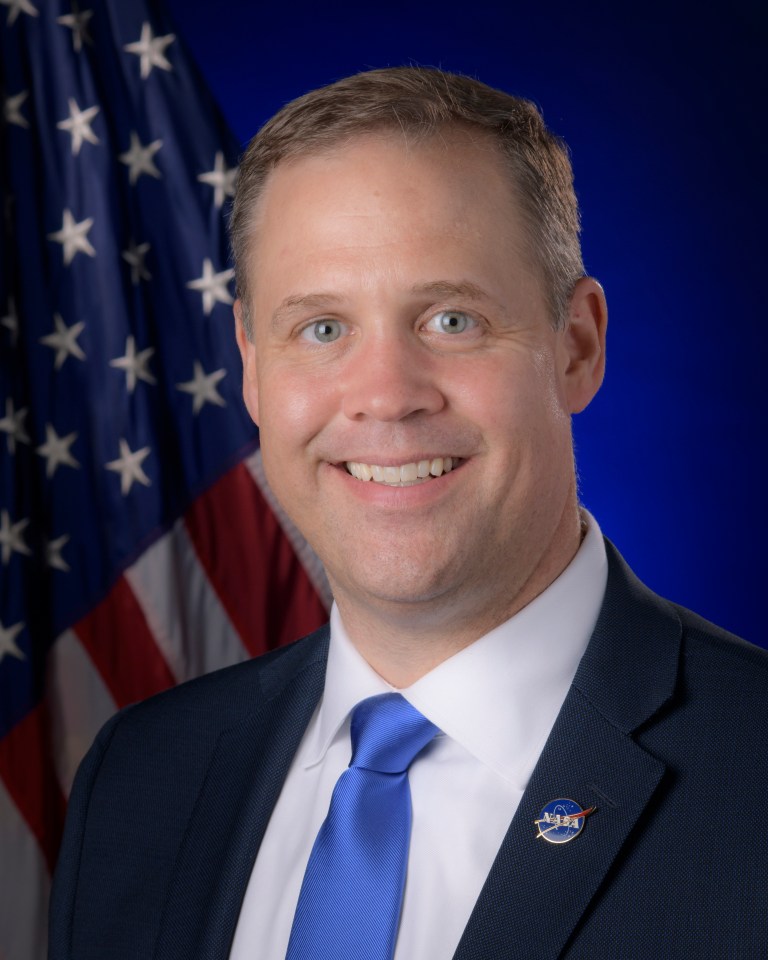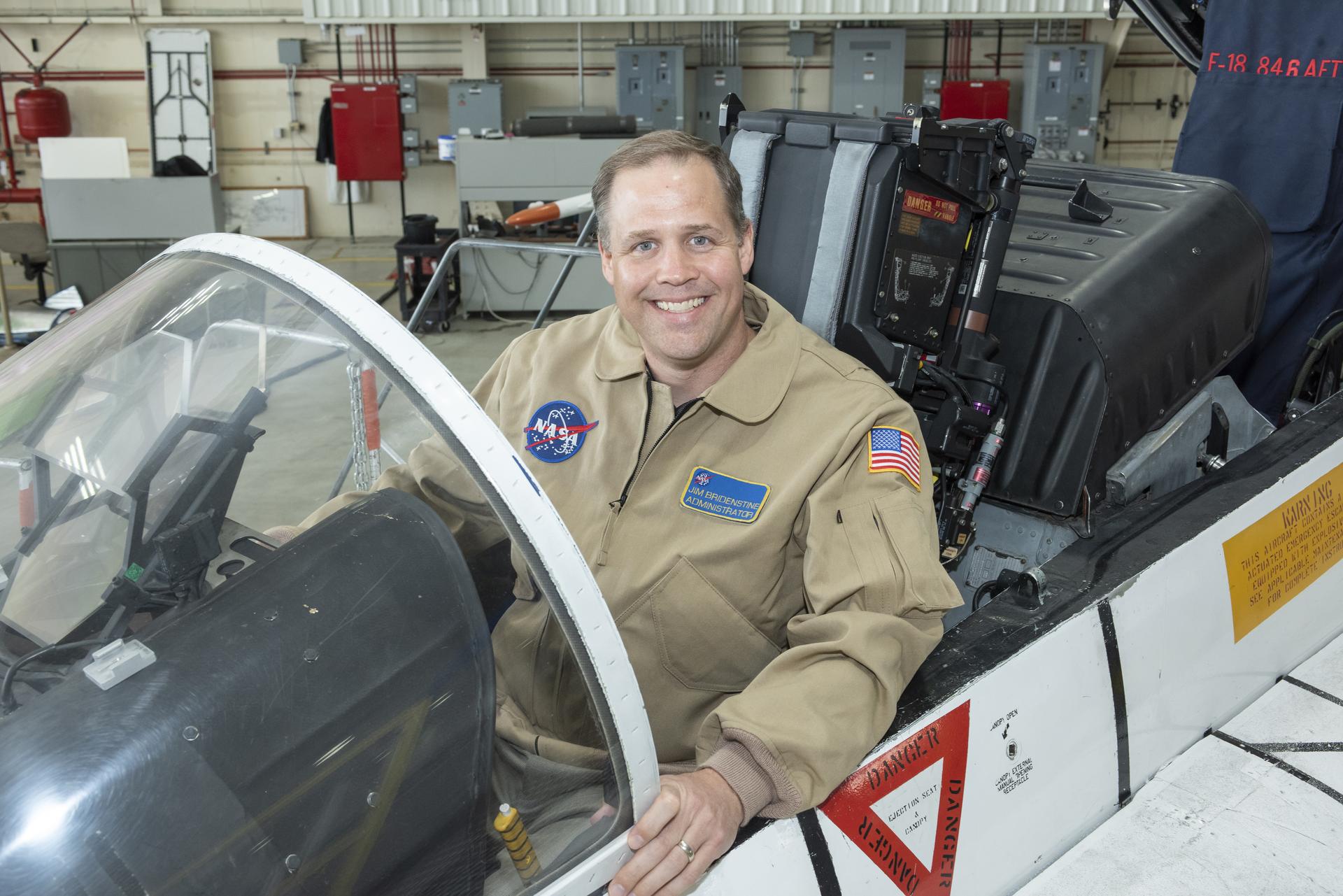
James F. Bridenstine
NASA Administrator (Apr. 23, 2018–Jan. 20, 2021)
Jim Bridenstine was nominated by President Donald Trump and confirmed by the U.S. Senate as the 13th Administrator of the National Aeronautics and Space Administration. As administrator, he has led NASA in advancing American aeronautic, science, and space exploration objectives since April 23, 2018.
Under Bridenstine’s leadership, NASA launched its new human lunar exploration mission, the Artemis program. As announced by Vice President Mike Pence in March 2019, the Artemis program will land the first woman and the next man on the surface of the Moon by 2024, the first human landing since the end of NASA’s Apollo missions in 1972. Through the Artemis program, NASA is developing the Orion crew capsule and the Space Launch System, the most powerful rocket ever built. These state-of-the-art systems will help build the Gateway, a lunar orbiting space station that will give American astronauts more access to the surface of the Moon than ever before. As directed by President Trump, all lunar exploration efforts under Artemis are designed to prove our technology and perfect our capabilities to live and work on a different world in preparation for a future crewed mission to Mars.
Bridenstine has managed the continued commercial resupply of the International Space Station and has led agency efforts to partner with American businesses on the Commercial Crew Program. This program seeks to once again launch American astronauts on American rockets from American soil, something not done since the end of the Shuttle program in 2011. Additionally, Bridenstine established the Commercial Lunar Payload Services Program to partner with private enterprise in landing rovers on the lunar surface. These rovers will contain tools and science experiments in preparation for the arrival of American astronauts.
During Bridenstine’s tenure, the agency has reinforced aeronautic development of the X-59, a quiet supersonic aircraft, and the X-57, the agency’s first all-electric airplane. He has also backed NASA’s aeronautical innovators to develop the Unmanned Aircraft Systems Traffic Management to facilitate the safe use of drones for commercial enterprise and in everyday life. The agency’s dynamic science portfolio under Bridenstine includes a life-seeking Mars rover scheduled to launch in July 2020, enhancing the nation’s fleet of Earth-observing satellites and final preparations of the James Webb Space Telescope.
Prior to serving at NASA, Bridenstine was elected in 2012 to represent Oklahoma’s First Congressional District in the U.S. House of Representatives, where he served on the Armed Services Committee and the Science, Space and Technology Committee.
Bridenstine’s career in federal service began in 1998 as a pilot in the U.S. Navy, flying the E-2C Hawkeye off the USS Abraham Lincoln aircraft carrier. It was there that he flew combat missions in Iraq and Afghanistan and accrued most of his 1,900 flight hours and 333 arrested landings on an aircraft carrier. He later moved to the F-18 Hornet and flew at the Naval Strike and Air Warfare Center, the parent command to TOPGUN.
After transitioning from active duty to the U.S. Navy Reserve, Bridenstine returned to Tulsa, Oklahoma, to be the executive director of the Tulsa Air and Space Museum & Planetarium.
Bridenstine completed a triple major at Rice University and earned his MBA at Cornell University. He and his wife, Michelle, have three children.























